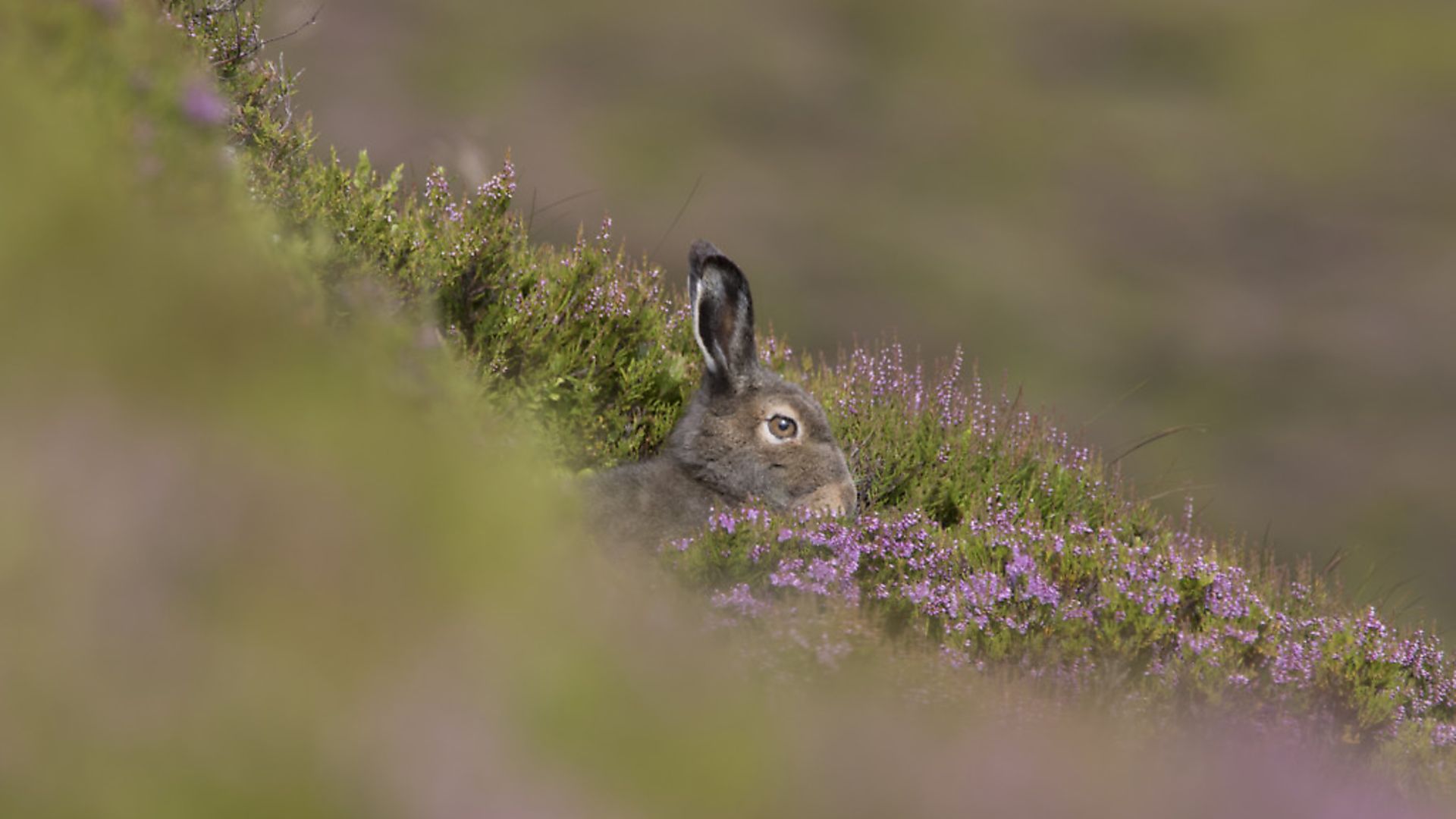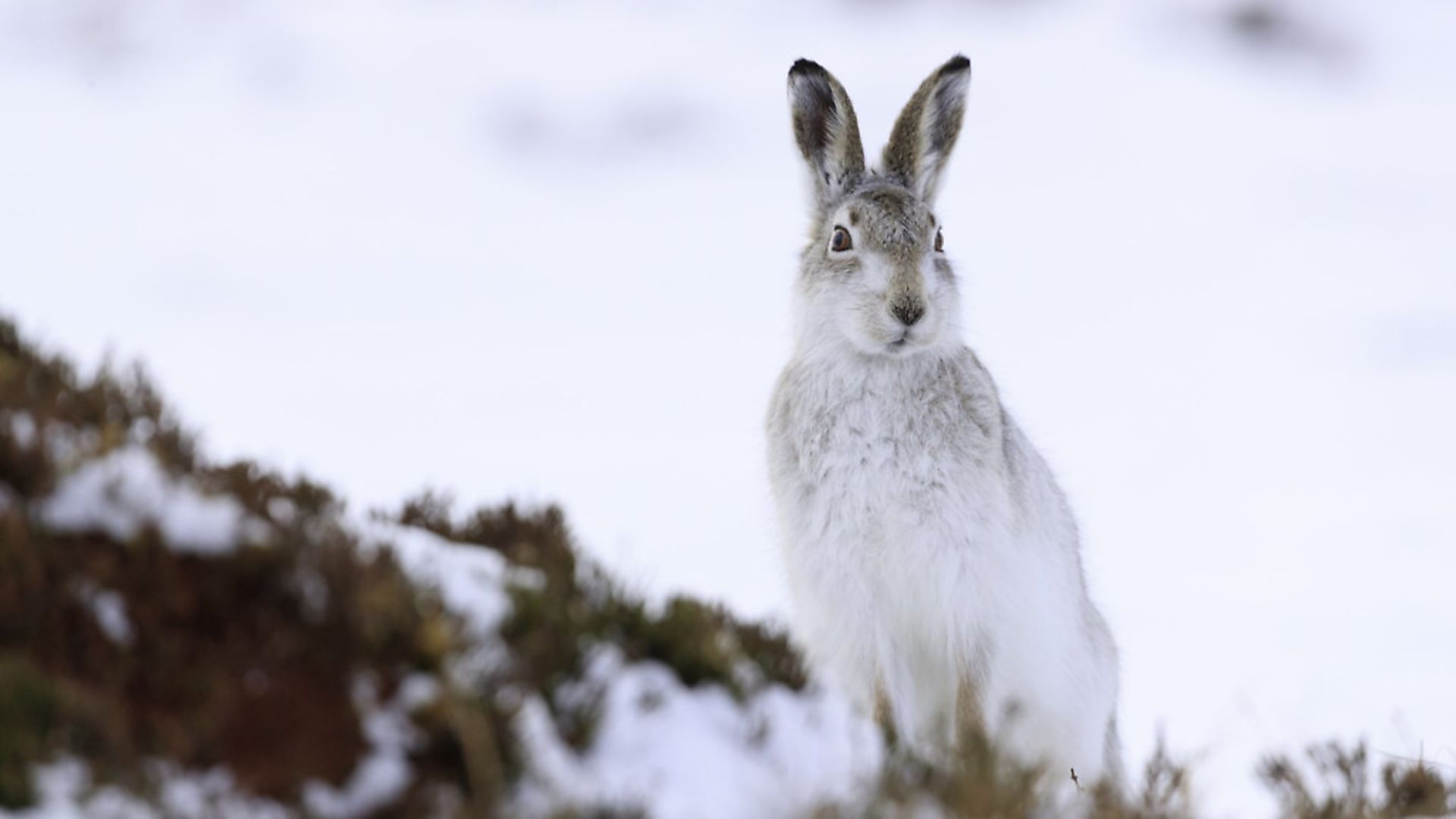Why can’t mountain hares be shot anymore? Why were they culled in the first place? What does this mean for upland moors? Find out all this and more in our detailed explanation of the mountain hare saga!
 credit: Getty Images/iStockphoto
credit: Getty Images/iStockphoto
What’s happened with mountain hare shooting?
The Animals and Wildlife (Scotland) Bill was debated in the Scottish Parliament on June 17. At the last minute, the Green Party added three suggested amendments to the bill, one of which was the full protection of mountain hares and further protection for beavers, another concerned tail docking and the third wildlife crimes. Senior MSPs from the Conservatives, Liberal Democrats and the SNP heavily criticised the timing of the amendments.
With no time for Parliament or its committees to consider the amendments before having to vote on them, BASC briefed MSPs on the matters and requested they reject them. Despite this, the amendment introduced at the third stage of the Animals and Wildlife (Scotland) Bill passed by 60 to 19 votes, and gives mountain hares year-round legal protection in Scotland.
Dr Colin Shedden, BASC’s director in Scotland, said: “In voting for this amendment, some members of the Scottish Parliament have effectively ignored the positive association between grouse moor management and mountain hare conservation.
“However, it is clear that Scottish Ministers recognise the need for a licensing system and BASC, on behalf of seven land management organisations, submitted licensing proposals to the Minister yesterday. We will be continuing to work with Government to ensure licensing of shoots provides sustainable management of mountain hares.
“The decision may be classed as a win for the Green Party but without licensing it will categorically not help conserve the mountain hare.”
 credit: Getty Images/iStockphoto
credit: Getty Images/iStockphoto
Responding to the amendment, the Minister Mairi Gougeon said that there would be a delay in the introduction of this protection and that consideration would be given to a licensing system. This follows the recommendations made in the recent Werritty Review with respect to mountain hares.
Why are we not allowed to shoot mountain hares anymore?
There are conflicting studies on the subject of mountain hare populations, with some observing no net gain or loss over a time period, and some showing dramatic population declines. It is a fact that the UK has a good, high density relative to the rest of Europe, and interpretation of data and data collection methods will cause conflictions with conclusions drawn from many studies. The GWCT found a clear cyclical population trend with small- to mid-sized peaks and troughs but no evidence of overall decline.
The Scottish Greens launched a campaign to end the shooting of mountain hares by granting them protected status. On the party website, an online petition was published with the following message: “Green MSP Alison Johnstone has tabled the amendment to the Animals and Wildlife Bill that would make mountain hares a protected species... This would end the killing of mountain hares for fun and the mass killing of these beautiful animals on grouse moors... Sign the petition now and show your support for an end to the slaughter of mountain hares.”
Further down the page is a video by Wild Justice’s Chris Packham, which focuses on a clip of a hare being wounded by a gun during a cull, before being caught and dispatched by one of the working dogs. It’s not particularly nice to watch, but the situation was managed and remedied swiftly; of course, it was a red rag to anyone with a dislike of fieldsports.
The video’s end credits attributed it to Lush, the League Against Cruel Sports (LACS), and One Kind – the latter two of which are animal rights groups, with LACS having been subject to extraordinary levels of negative press and whistle blowing incidents over the years. It has been accused of extremism, malpractice and immoral spending of donated funds, among other less serious offences such as extreme hypocrisy.
The tendency of political parties to use animal rights policy to influence voting has prompted suggestions that the amendments were motivated more by political gain than by conservation or welfare concerns. Considering the Scottish Governments own recent review into grouse moor management, in which mountain hare management was included and due to be discussed, it does seem opportunistic timing.
Alex Hogg, Chairman of the Scottish Gamekeepers’ Association, said: “The Werritty review of grouse moor management looked at the issue of mountain hares in depth and Scottish Government is due to respond to that report in due course.
“That is where this issue should be looked at, not thrown late into a bill as a piece of political opportunism.
“Since seasons were brought in for mountain hares, all licences granted for culling have been given out by SNH to protect young trees. As the Green party demands more tree planting to counter climate change, it will be interesting to see how Alison Johnstone intends to protect saplings from mountain hares.”
Why are mountain hares culled in the first place?
Mountain hares are culled on grouse moors primarily to control louping-ill – a tick-borne virus that affects sheep and red grouse and is often fatal. The ticks are carried on hares and other mammals such as deer. There are currently no treatments or vaccines available for louping-ill, and so the only method of controlling the virus is to control the populations of the animals that spread the ticks. Mountain hares are also culled to protect plants and crops and prevent the spread of disease. They are observed in higher densities in upland locations managed for grouse because they too benefit from the predator control, new heather growth from practices like muirburn and heather cutting, and increased cover; the higher densities worsen the issue of louping-ill transmission. The season for mountain hares runs from 1 August to 28 February but they will soon be protected year-round.
MOUNTAIN HARE FACT FILE
Size: 2.5-3.5kg
Lifespan: 3-4 years
Colouring: Also known as the blue hare, the mountain hare’s coat is brown and changes to white in the winter to match its snowy upland surroundings. It is easy to distinguish from its larger brown cousin even in summer oat as the mountain hare’s tail is white, whereas the brown hare’s tail has a black upper side.
Habitat and distribution: The mountain hare is native to the UK. After the introduction by the Romans of the brown hare, its smaller cousin was restricted to the uplands where it could hold its own in terms of food and habitat, enjoying heather and moorland plants while the brown hare chowed down on lowland grasses and agricultural crops. In the latter stages of the 19th century, landowners re-introduced the mountain hare across the remainder of Britain’s uplands, but many of these re-introduced populations died out, leaving today a large core population in the Scottish Highlands, and smaller ones on some Scottish islands, a well-established population in the Southern Uplands and a small one in the Peak District.
Population: There are estimated to be about 350,000 mountain hares in the UK which, compared to populations elsewhere in Europe, is a relatively high population density.
Conservation status: In the UK, the mountain hare is a priority species under the UK Biodoversity Action Plan. Throughout the world, its conservation status if of ‘Least Concern’ (IUCN Red List).